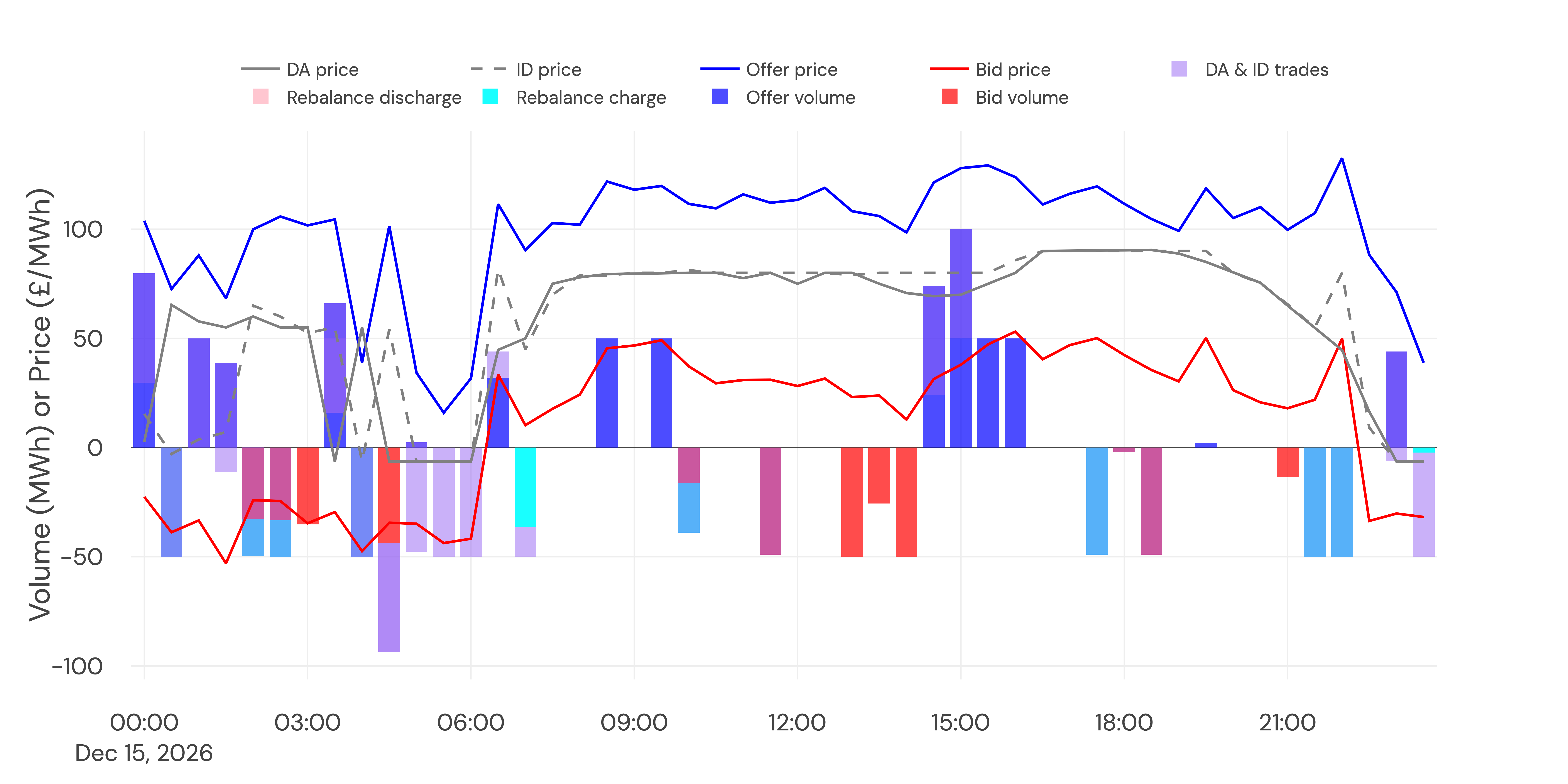Modelling battery optimisation within the BM
Batteries are optimised via a linear programme in the BM, in a similar way they are optimised in Day Ahead and Intraday markets. This is an update in v3.4 of the GB forecast.
Given the observed higher dispatch rates of BESS over 2024 and into 2025, a battery is now 'more' likely to be dispatched within the BM, if it is in-merit and available. 'In-merit' means it is priced competitively, and 'available' means it has sufficient headroom and/or footroom to increase or decrease it's output at short notice, doing a offer or a bid.
We optimise in the BM after Day Ahead and Intraday positions are set
The BM now represents another set of optimisations, taking place after the day-ahead position (set by day-ahead wholesale trading and any dynamic frequency response contracts) and the intraday position (which is set by a 2h rolling window across the delivery day, assuming 2 hours of foresight of intraday prices).
The BM position is decided using the regional BESS dispatch rate for both bids and offers in system and energy actions, the bid / offer prices, battery parameters like duration and cycling, and the cost of rebalancing any actions taken - assumed to be in intraday markets - to maintain a physical state of charge. Of course, it also takes into account the prior position of the battery - namely how much flexibility remains to dispatch within the BM. We also give the model some foresight of what potential BM actions might be.
An example of daily dispatch within the BM is shown below.

London, 2h, 2c battery doing a merchant-focussed strategy.
Updated about 2 months ago